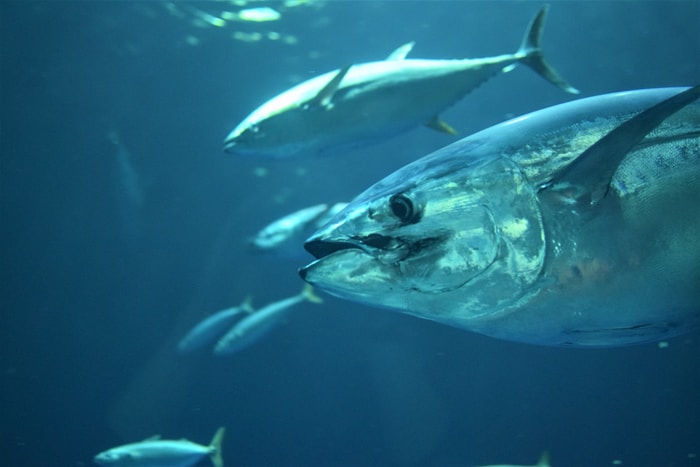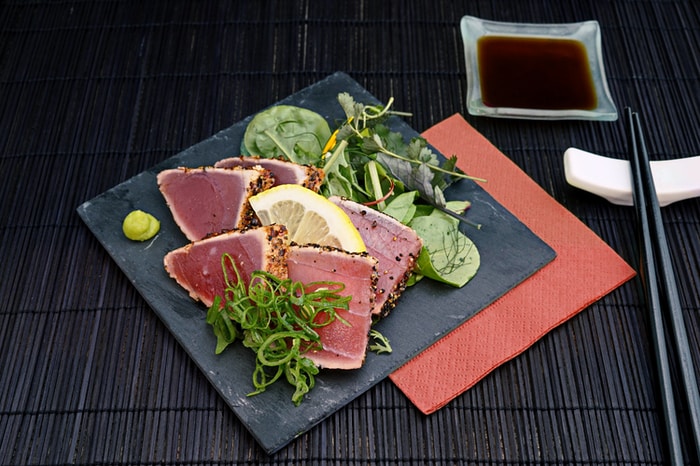Tuna is a type of fish that is naturally gluten free. It is also low in mercury and other toxins, making it a healthy choice for people with gluten sensitivities or allergies. Tuna is a versatile ingredient that can be used in many different dishes. It is also affordable, making it a popular choice for families on a budget.

Reasons to Add Tuna to Your Gluten Free Diet
If you have celiac disease or are gluten intolerant, you may be wondering if you can add tuna to your gluten free diet. The answer is yes, you can add tuna to your gluten free diet, and there are many reasons why you should.
Good Source of Protein and Low in Calories
Tuna is a great source of protein, and it’s low in calories. A three-ounce serving of tuna has about seventy-five calories, and it’s packed with twenty-five grams of protein. That’s more than half the daily recommended intake for most adults.
Good Source of Omega-3 Fatty Acids
Tuna is a good source of omega-3 fatty acids, which are beneficial for the heart and help to reduce the risk of heart disease. Omega-3 fatty acids can also improve cognitive function and help to prevent cognitive decline.
Low in Mercury
Tuna, a popular seafood choice, is low in mercury and a good source of protein. The species of tuna that are lowest in mercury are light tuna and skipjack tuna. Albacore (white) tuna has more mercury than light tuna and skipjack tuna, but it is still a low-mercury fish.
Affordable
Tuna is affordable because it is a common and abundant fish. It can be found in most markets and stores, and it is relatively inexpensive. Tuna also has a long shelf life, making it a convenient option for shoppers.
Versatile
Tuna is a versatile fish that can be prepared in many different ways. It can be grilled, baked, broiled, or fried. It can also be used in salads, sandwiches, and casseroles.

Types of Tuna You Can Buy
Tuna is a type of fish that can be bought fresh, frozen, or canned. There are several types of tuna that can be found in grocery stores, and each type has its own unique flavor. We will explore the different types of tuna that are available for purchase and discuss the taste and texture of each one.
There are also many different types of tuna, which can be divided into two categories: light tuna and dark tuna.
Light Tuna
Light tuna is a term used for skipjack or yellowfin tuna. The skipjack is the smaller of the two, typically weighing in at under 10 pounds. Yellowfin tuna can grow much larger, sometimes reaching weights of over 200 pounds.
Light tuna is a popular choice for sushi and other seafood dishes because it has a mild flavor and a delicate texture. It’s also low in fat and calories, making it a healthy option.
Skipjack and yellowfin tuna are both caught in open water using purse seine nets or longlines. They are not considered endangered species, but their populations have been declining in recent years due to overfishing.
Difference Between Light Tuna and White Tuna
Light tuna and white tuna are both types of tuna, but they are not the same. Light tuna is a type of skipjack or yellowfin tuna, while white tuna is a type of albacore tuna.
Light tuna has a milder flavor and a softer texture than white tuna. It also has a lower fat content. White tuna has a stronger flavor and a firmer texture than light tuna. It also has a higher fat content.
The main difference between light tuna and white tuna is the fat content. White tuna has a higher fat content, which gives it a stronger flavor and firmer texture.
Dark Tuna
Dark tuna is a type of tuna that has been exposed to oxygen for an extended period of time, causing it to turn dark in color. The term “dark tuna” can be misleading, as the fish does not actually become “dark” in color, but rather a more purplish hue.
The exposure to oxygen causes the deoxymyoglobin in the fish to oxidize and turn a dark color. This darkening process is often used by fisherman to identify which fish are fresh and which ones have been exposed to oxygen for an extended period of time.

Is Dark or Light Tuna Better?
The answer depends on what you’re looking for. Skipjack tuna has a stronger flavor than yellowfin, so if you’re looking for something with a lot of flavor, go with the skipjack. However, if you prefer something subtler, then albacore is the way to go.
One thing to keep in mind when choosing between these two types of tuna is the mercury content. Dark tuna contains more mercury than light tuna, so if you’re worried about getting too much mercury in your diet, then go with the lighter option.
Tuna Alternatives For Your Gluten Free Diet
If you’re looking for a healthy, gluten free protein option, look no further than tuna. But what do you do if you’re tired of eating the same old thing? Here are 5 tuna alternatives that will spice up your gluten free diet.
Salmon
Salmon is high in protein and omega-3 fatty acids, which are beneficial for your health. It also contains vitamin D, which is important for people who don’t get enough sunlight. Salmon is a versatile food that can be cooked in many different ways. You can grill, bake, or fry it, or you can eat it raw.
Sardines
Sardines are a great alternative to tuna for your gluten free diet. They are low in mercury and rich in omega-3 fatty acids, which makes them a healthy choice for your heart. Sardines also provide a good source of protein and vitamin B12.

Anchovies
Anchovies are a type of fish that is low in calories and high in protein. They also have a moderate amount of omega-3 fatty acids, which are beneficial for your health. Anchovies can be used as a substitute for tuna in any recipe. They taste great when added to salads or sandwiches, and they also make a great addition to pasta dishes. If you’re looking for a healthy and delicious snack, give anchovies a try!
Mackerel
Mackerel is high in omega-3 fatty acids, which are good for your heart and help keep your skin looking young and healthy. It’s also low in mercury, so it’s a good choice for pregnant women or nursing mothers.
Herring
If you’re looking for something a little different, why not try herring? Herring is a type of fish that is low in mercury and high in omega-3 fatty acids. It also has a strong flavor that many people enjoy. You can find herring at most grocery stores or online retailers.








